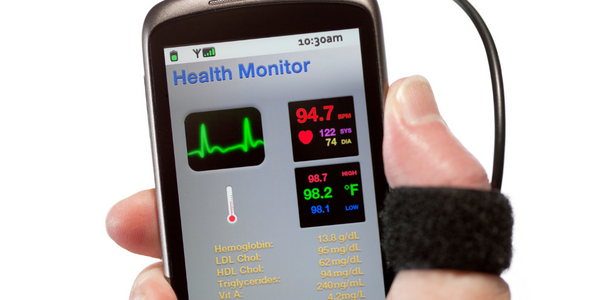Technology Category
- Functional Applications - Enterprise Asset Management Systems (EAM)
- Wearables - Implants
Applicable Industries
- Finance & Insurance
- Healthcare & Hospitals
Applicable Functions
- Logistics & Transportation
- Procurement
Use Cases
- Asset Lifecycle Management
- Track & Trace of Assets
Services
- System Integration
About The Customer
Accufix Surgical Inc. is a specialty orthopedic device developer and distributor. The company is known for its Accu-Joint® Hemi implant system, an FDA-approved treatment for metatarsophalangeal (MTP) joint disorders. This system is designed to restore natural motion and preserve a patient's active lifestyle. Accufix Surgical® aims to anatomically restore joint function to patients with arthritic conditions and improve their quality of life. The company distributes its implant system to hospitals as part of a surgical tray, each worth between $45,000-65,000.
The Challenge
Accufix Surgical Inc., a specialty orthopedic device developer and distributor, faced a significant challenge in tracking and managing their surgical trays, each worth between $45,000-65,000. The trays, which are part of the Accu-Joint® Hemi implant system, go through numerous steps from checkout to surgery, necessitating a comprehensive tracking solution. The company was also facing the imminent sunset of their existing asset management solution. Despite having this solution, Accufix Surgical® was grappling with several issues, including lack of customizability, inability to report on their workflows, and lack of customer support. These challenges necessitated the search for a new platform that could address these issues and provide a more efficient and effective way of managing their assets.
The Solution
Accufix Surgical® chose Asset Panda as their new asset management platform due to its price-to-value ratio and user-friendliness. The company had specific requirements for their asset management program, including 12 custom reporting fields, 43 custom fields across the Assets, Facilities, and Distributors groups, 15+ active locations, and the ability to update reservations after their initial creation with distributor and representative information. With the help of Asset Panda's implementation team, Accufix Surgical® was able to get their account up and running in a record 48 hours. The platform allowed them to customize their fields and workflows to match their processes, track every step of the process, and report on all their groups and their relationships with one another. This comprehensive solution addressed all the initial challenges faced by Accufix Surgical®.
Operational Impact
Quantitative Benefit

Case Study missing?
Start adding your own!
Register with your work email and create a new case study profile for your business.
Related Case Studies.

Case Study
Hospital Inventory Management
The hospital supply chain team is responsible for ensuring that the right medical supplies are readily available to clinicians when and where needed, and to do so in the most efficient manner possible. However, many of the systems and processes in use at the cancer center for supply chain management were not best suited to support these goals. Barcoding technology, a commonly used method for inventory management of medical supplies, is labor intensive, time consuming, does not provide real-time visibility into inventory levels and can be prone to error. Consequently, the lack of accurate and real-time visibility into inventory levels across multiple supply rooms in multiple hospital facilities creates additional inefficiency in the system causing over-ordering, hoarding, and wasted supplies. Other sources of waste and cost were also identified as candidates for improvement. Existing systems and processes did not provide adequate security for high-cost inventory within the hospital, which was another driver of cost. A lack of visibility into expiration dates for supplies resulted in supplies being wasted due to past expiry dates. Storage of supplies was also a key consideration given the location of the cancer center’s facilities in a dense urban setting, where space is always at a premium. In order to address the challenges outlined above, the hospital sought a solution that would provide real-time inventory information with high levels of accuracy, reduce the level of manual effort required and enable data driven decision making to ensure that the right supplies were readily available to clinicians in the right location at the right time.

Case Study
Gas Pipeline Monitoring System for Hospitals
This system integrator focuses on providing centralized gas pipeline monitoring systems for hospitals. The service they provide makes it possible for hospitals to reduce both maintenance and labor costs. Since hospitals may not have an existing network suitable for this type of system, GPRS communication provides an easy and ready-to-use solution for remote, distributed monitoring systems System Requirements - GPRS communication - Seamless connection with SCADA software - Simple, front-end control capability - Expandable I/O channels - Combine AI, DI, and DO channels

Case Study
Driving Digital Transformations for Vitro Diagnostic Medical Devices
Diagnostic devices play a vital role in helping to improve healthcare delivery. In fact, an estimated 60 percent of the world’s medical decisions are made with support from in vitrodiagnostics (IVD) solutions, such as those provided by Roche Diagnostics, an industry leader. As the demand for medical diagnostic services grows rapidly in hospitals and clinics across China, so does the market for IVD solutions. In addition, the typically high cost of these diagnostic devices means that comprehensive post-sales services are needed. Wanteed to improve three portions of thr IVD:1. Remotely monitor and manage IVD devices as fixed assets.2. Optimizing device availability with predictive maintenance.3. Recommending the best IVD solution for a customer’s needs.

Case Study
HaemoCloud Global Blood Management System
1) Deliver a connected digital product system to protect and increase the differentiated value of Haemonetics blood and plasma solutions. 2) Improve patient outcomes by increasing the efficiency of blood supply flows. 3) Navigate and satisfy a complex web of global regulatory compliance requirements. 4) Reduce costly and labor-intensive maintenance procedures.

Case Study
Cloud-based healthcare solution for Royal Philips
Royal Philips wanted to launch its cloud-based healthcare solution HealthSuite Digital Platform in China to deliver services to help cope with challenges related to urbanization and population growth. Philips wanted to achieve this goal by combining mobile, cloud computing and big data technologies. To bring this platform and product to market, Philips required cloud computing and local technical service capabilities in China, in addition to a flexible IT infrastructure that could handle user requests.








